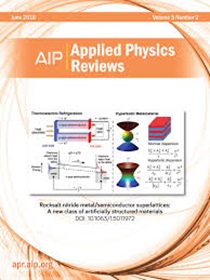连接基本机制和人工智能算法的循环路径:以调整非晶网络中的泊松比为例
IF 11.9
1区 物理与天体物理
Q1 PHYSICS, APPLIED
引用次数: 0
摘要
"人工智能促进科学 "被广泛认为是科学研究发展的未来趋势。目前,虽然机器学习算法在科学研究中发挥了至关重要的作用,成功案例不胜枚举,但人工智能协助研究人员揭示某种现象背后的物理机制,进而利用该机制提高机器学习算法效率的例子却相对较少。本文以研究泊松比极值与无定形网络结构之间的关系为例,说明机器学习方法如何帮助揭示潜在的物理机制。在认识到泊松比依赖于动态矩阵的低频振动模式后,我们就可以利用以动态矩阵而非传统图像识别为基础训练的卷积神经网络,以更高的效率预测非晶体网络的泊松比。通过这个例子,我们旨在展示人工智能在揭示基本物理机制方面所能发挥的作用,从而显著改进机器学习算法。本文章由计算机程序翻译,如有差异,请以英文原文为准。
A cyclical route linking fundamental mechanism and AI algorithm: An example from tuning Poisson's ratio in amorphous networks
“AI for science” is widely recognized as a future trend in the development of scientific research. Currently, although machine learning algorithms have played a crucial role in scientific research with numerous successful cases, relatively few instances exist where AI assists researchers in uncovering the underlying physical mechanisms behind a certain phenomenon and subsequently using that mechanism to improve machine learning algorithms' efficiency. This article uses the investigation into the relationship between extreme Poisson's ratio values and the structure of amorphous networks as a case study to illustrate how machine learning methods can assist in revealing underlying physical mechanisms. Upon recognizing that the Poisson's ratio relies on the low-frequency vibrational modes of the dynamical matrix, we can then employ a convolutional neural network, trained on the dynamical matrix instead of traditional image recognition, to predict the Poisson's ratio of amorphous networks with a much higher efficiency. Through this example, we aim to showcase the role that artificial intelligence can play in revealing fundamental physical mechanisms, which subsequently improves the machine learning algorithms significantly.
求助全文
通过发布文献求助,成功后即可免费获取论文全文。
去求助
来源期刊

Applied physics reviews
PHYSICS, APPLIED-
CiteScore
22.50
自引率
2.00%
发文量
113
审稿时长
2 months
期刊介绍:
Applied Physics Reviews (APR) is a journal featuring articles on critical topics in experimental or theoretical research in applied physics and applications of physics to other scientific and engineering branches. The publication includes two main types of articles:
Original Research: These articles report on high-quality, novel research studies that are of significant interest to the applied physics community.
Reviews: Review articles in APR can either be authoritative and comprehensive assessments of established areas of applied physics or short, timely reviews of recent advances in established fields or emerging areas of applied physics.
 求助内容:
求助内容: 应助结果提醒方式:
应助结果提醒方式:


